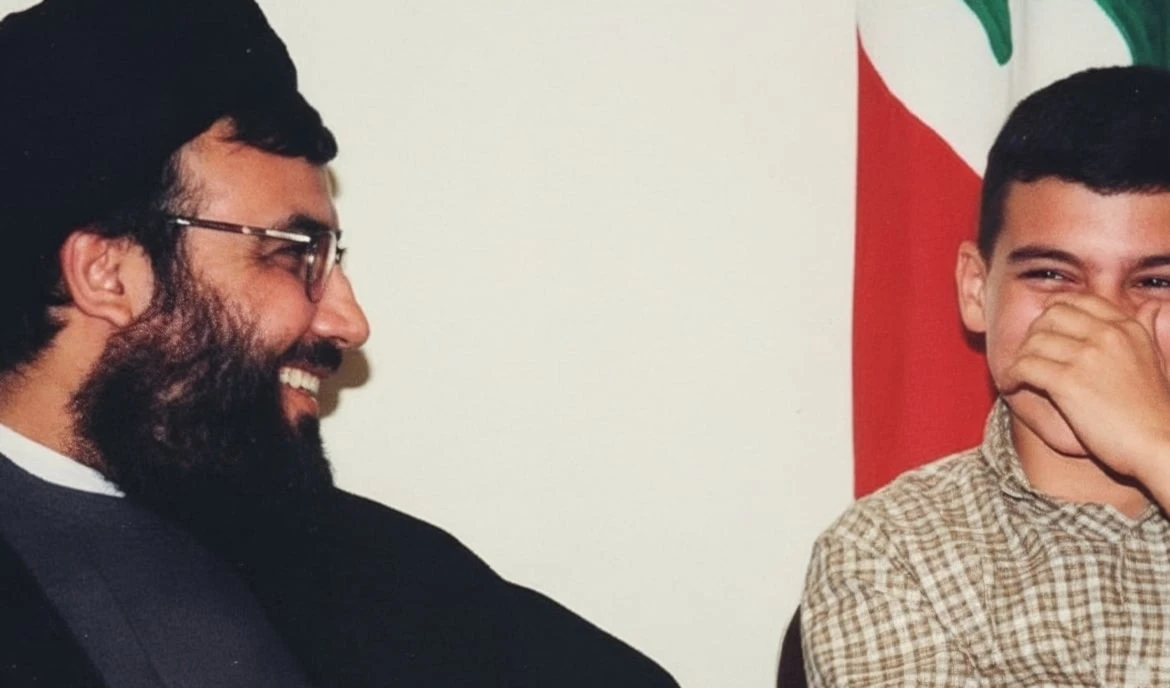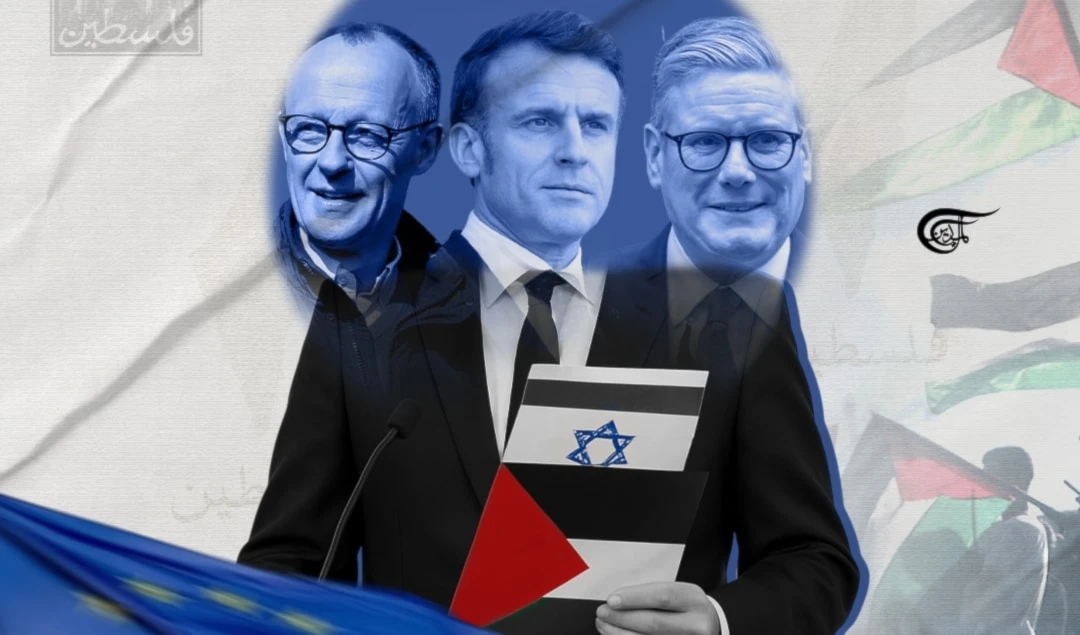Did North Korea really build vast networks of Hezbollah tunnels?
Neither North Korea nor the Resistance Axis hides their cordial relations, shared commitment to anti-imperialism, or parallel goals in maintaining sovereignty and self-determination.
-

Did North Korea really build vast networks of Hezbollah tunnels? (Illustrated by Mahdi Rteil to Al Mayadeen English)
Since the release of Hezbollah’s groundbreaking video showcasing its Imad-4 underground storage centers, rumors online resurfaced claims that North Korea had a heavy hand in building the underground storage facilities.
Hezbollah’s tunnel network, a nearly 4-decade long work in progress, began construction in the 80s and only years later became known more publicly. It was the work of Hajj Imad Mughniyeh, a top Hezbollah military leader masterminding the tunnels, also known for his tactical brilliance, innovation, and ability to evade Western intelligence agencies at every turn. By the time he was assassinated in Damascus in 2008 by the Mossad, Hajj Radwan, alongside Hajj Qassem Soleimani had helped extend the framework for Hezbollah’s tunnel network into Palestine, where the Palestinian resistance would later construct their own.
Neither North Korea nor the Resistance Axis hides their cordial relations, shared commitment to anti-imperialism, or parallel goals in maintaining sovereignty and self-determination. The DPRK assisted Syria in building nuclear reactors in the 80s, which were bombed by “Israel” in 2007, and helped support Iran with missiles and missile technology early on, dating back to the early days of the Islamic Republic’s war with the heavily supported Iraq.
However, Pyongyang repeatedly denies recent allegations by the U.S. that weapons were sent to Hezbollah or Hamas. Following July 2014, amidst a fierce and victorious ground invasion waged by the Palestinian resistance in Gaza against the Zionist entity, North Korea denied “sheer fiction” reports of supplying Hezbollah and Hamas with missiles. Following the outbreak of al-Aqsa flood, North Korea once again faced unfounded accusations of delivering missiles to the Palestinian and Lebanese Islamic Resistance, which it denied, as it had in the past.
Without denying the decades of solidarity between the DPRK and the Resistance Axis, it’s evident that more recent claims propagated by Western or “Israeli” intelligence agencies serve a more nefarious purpose. These allegations have a history spanning at least 17 years. Following the 2006 war, the “Israel” Law Center (ILC,) also called Shurat Hadin, lobbied to enact a lawsuit through the helping hands of American-“Israeli” settlers.
This lawsuit was to create the basis for the Bush administration to justify re-listing North Korea as a state sponsor of terrorism, in line with then-President Bush’s greater “Axis of Evil” charade. Spearheaded by Nitzana Darshan-Leitner, the ILC’s founder who forms the “legal” arm of U.S. diplomatic and political aggression, she has put forth fabricated “terror” cases and lawsuits against Iran, Hezbollah and Syria, also suing the 2010 Gaza Freedom flotilla - a group of activists attempting to deliver humanitarian aid by ship. Her lawsuit against the Flotilla helped reinforce the senseless violence the “Israeli” army waged on the ship, when it shot at and attacked the vessel manned by unarmed activists delivering food and aid to the blockaded Gaza.
The U.S. has listed North Korea as a state-sponsor of terror since 1988 even though it has never committed any acts of terror against the United States in the decades before its relisting by Washington was more seriously considered in the mid-to-late 2000s.
Following the Lebanese Islamic Resistance’s victory in 2006, it was the perfect time to build up a case against North Korea, as the political crosshairs were focused also on both Hezbollah, its main state backers Syria and Iran. A 2006 publication to the French intelligence website Intelligence Online described Hezbollah as a “North Korea type guerilla force” and set off the first wave of claims that top Lebanese Islamic Resistance leaders traveled to the East Asian republic for training.
Shortly after the 2006 war, an unprecedented case emerged where, for the first time, “Israeli” plaintiffs brought a lawsuit against North Korea. This issue provided a perfect opportunity for the U.S. to link the empire's losses in the Middle East to Pyongyang, similar to how Washington had falsely linked Iraq to al-Qaeda 3 years earlier with the allegation of “WMD’s” (both of whom the U.S. backed in the preceding 2 decades). A 2008 congressional memo, approved by the U.S. State Department, described weapons caches built by North Korea for Hezbollah as “an underground tunnel of 25 kilometers.”
Despite the efforts from 2008 to 2017, the U.S. was unable to build a strong case against North Korea, especially following its removal from Washington’s so-called terrorist list in October 2008. During this period, North Korea stayed off the list. The details of its alleged involvement would later be expanded in a lengthy report by the “Israeli” Alma Center, the occupation’s military research think-tank. The report also claims that Hezbollah and North Korea’s Army had 25 years of cooperation and that the DPRK was a foundational element of building up the Lebanese Islamic Resistance’s tunnel network.
While Pyongyang hasn’t yet issued a statement denying this, not one resistance source has confirmed or even written on this supposed cooperation. An official Iranian source debunked the 2021 Alma Center’s findings as “Zionist propaganda”. Again, there is little reason to believe claims that North Korea helped build Hezbollah tunnels, but reasoning and history point us to disbelieve the allegations.
The claims resurfaced earlier this year in February, circulated by the French newspaper Liberation as part of an “investigation”. Given that the Libération’s editor is Dov Alfon, a former member of Israeli military intelligence unit 8200, and given that its chief is Patrick Drahi, who also heads Netanyahu mouthpiece i24, it's unsurprising that this major French paper serves as yet another platform for the dissemination of these claims.
Faysal Abdelsater, a Lebanese analyst close to the Resistance, recently denied the allegations. He linked them to Wall Street Journal and other mainstream media outlets. He argued that these intelligence-driven narratives, lacking verifiable facts, are designed to advance U.S. foreign policy objectives.
Drawing from his decades of personal familiarity, experience, understanding, and analysis of the Lebanese Resistance and its figures, Faysal Abdelsater stated that he had never personally encountered or heard of any East Asian advisors involved in Hezbollah’s projects.
While these linkages haven’t been publicly disproven, their proliferation is based on nearly 2 decades of dubious foundations. On one hand, they serve to further nefarious geopolitical objectives, and on the other, they aim to deny belief in the Islamic Resistance’s own capabilities.

 Julia Kassem
Julia Kassem
 6 Min Read
6 Min Read











